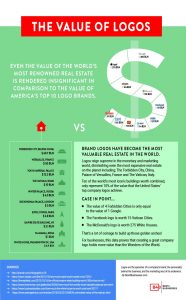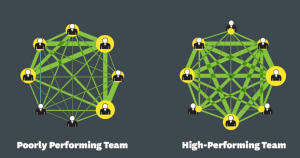If you’re emailing to women, columnist Steve Dille has some lessons to share. Dille explains how Lifescript uses email to effectively compete in the increasingly crowded universe of online health resources.

Lifescript, a website for women’s health, is a flourishing player in a high-stakes game where precision execution and technical finesse have to function in harmony with spot-on content that’s rigorously factual but also embraces celebrity culture and entertainment. (Disclosure: Lifescript is a Message Systems client.)
First, let’s lay out a little context:
- Women make approximately 80 percent of the health care decisions for their families and are most likely to be the caregivers if a family member becomes sick.
- Women use heath care services more than men and account for 57 percent of expenses in physician’s offices.
- 59 percent of women make health care decisions for others.
- 53 percent of women turn to the Web for health care information, but only 31 percent trust the info they find online.
- One in every 20 searches on Google is about health information.
- And 86 percent of online women use the Web to find health information, compared with 73 percent of online men.
It’s no surprise, then, that there’s an ever-expanding universe of online health and lifestyle resources, from WebMD to Women’s Health and beyond, aiming to snag the female audience that’s concerned with health and quality-of-life issues.
There are billions of eyeballs and trillions of future health care and lifestyle dollars up for grabs.
What makes this even more compelling is the social multiplier involved: Women are accustomed to sharing what they find online and in their inbox with their friends and family, so there’s a huge viral community-building opportunity awaiting the marketer that respects who they’re speaking to — and leverages email’s ability to engage them.
Lifescript does that, and does it well.
The 1-2-3s Of Email For Women
Marti Barletta, author of “Marketing To Women,” told MarketingSherpa, “Women think email is the greatest invention since the telephone. Maybe it’s even better.”
In the MarketingSherpa interview, she made four key points on how to use email to reach and engage women:
- Women are far more likely than men to forward email. It’s true in social sharing, and in email, too. So forwarding and social sharing features are absolute mandatories, not just as buttons or links, but as part of content and copy: “Do you have a relative with this condition?” is one example.
- They’ll dig for details. Most women assess potential solutions from multiple angles. “They’ll look at all the marketplace data, do due diligence, get more details,” Barletta said. Give them a wealth of education and facts (more copy may mean fewer clicks but better, more valuable conversions), stress guarantees and warranties, promise strong customer/user support and use promotions and limited-time offers.
- Put “real people” into your emails. Show realistic-looking, relatable human beings, tell personal stories, include testimonials, or even have the emails sent from a person, not an office or company. Even an email from a brand mascot or relevant celeb (Mrs. Butterworth! Doctor Oz!) usually sees better response than one from Company HQ.
- Test “milestone” marketing. Women are usually tasked with the logistics and stresses of big events and critical passages in family life — weddings, births, retirements, health crises — and helping women through them and other life stage developments burnishes your brand in their eyes.
We might add one more to the list:
- Mobile email usage is increasingly ubiquitous for women, enabling them to engage and share any time, anywhere, so your emails need to be designed accordingly:
- 50 percent of female cell phone users use their devices to access email, versus 49 percent for men.
- Women click on mobile emails 10 percent more often than men.
- 50 percent of female cell phone users use their devices to access email, versus 49 percent for men.
Serving Lifestyles And Life Stages
As Lifescript co-founder and CTO Jack Hogan pointed out in a video interview and case study by Message Systems, Lifescript isn’t a website or a wiki. First and foremost, as he put it, “We’re a digital health publisher.”
It’s a publisher that’s advertiser-supported, so “publish or perish” is a fact of life, one that demands a steady stream of fresh content appealing to a varied spectrum of users across multiple life stages and lifestyles. That content needs to be pushed out to subscribers with daily regularity, too, to keep them interested and engaged.
In truth, Lifescript encompasses a staggering amount of content, from encyclopedic knowledge bases about specific conditions to calculators, videos, food and recipe guides, even horoscopes and its LifescriptTV YouTube channel with its own extensive catalogue of content from subchannels like “Ask The Doctor” or the “Hollywood Health Report.”
So there’s something for everyone, but any single Lifescript user can probably also find multiple points of engagement, no matter how narrow their interests when they come to the site.
The variety of options for email users is expansive, too. Lifescript offers users no less than eight different email opt-ins, for daily newsletters that run the gamut from Healthy Advantage to Diet & Fitness, Lifescript Daily Deals, even a Daily Horoscope.
The more fact-packed of these are linked to on-site content written by physicians and nutrition and health experts, hitting on the topics most relevant to Lifescript’s user base.
That breadth of email options increases the chance a visitor will find at least one topic that’s worth the opt-in — which delights advertisers, since their banners, sponsored content and video make up a good share of each newsletter.
In Volume, In The Moment
One of the challenges Lifescript needed to overcome as it grew was its own email infrastructure, which was inadequate to meet its ambitions. As the subscriber base swelled, so did the need for solutions that didn’t necessarily entail adding more hardware or human capital.
Moving to a scalable state-of-the-art message management platform (full disclosure: it was provided by my firm, Message Systems) enabled extremely high sending volumes, while reducing the number of servers needed and delivering more comprehensive performance data.
Picking the right infrastructure or software solution is fundamental to an enterprise like Lifescript, which sometimes needs to deliver nearly 11 million emails per hour.
Clockwork reliability is crucial, since timing is everything: Lifescript emails need to reach subscriber inboxes at the right dayparts to enable recipients to open, read or forward a newsletter or, very importantly, take advantage of embedded advertiser links and branded content.
The Lessons From Lifescript
Lifescript has seen steady success, according to Inc., growing 82 percent over the last three years.
The best practices it’s followed in utilizing email as a crux of that growth are a how-to list for any marketer hoping to carve out their share of any category, let alone one as explosive as the category where Lifescript is making its mark:
- Integrating email and site content in a frictionless manner will drive clickthrough and engagement.
- Providing a wide variety of quality content satisfies different segments of a diverse audience and gives any single user a big range of engagement options.
- A range of newsletter options increases the chance of an opt-in and makes users feel they’ve got the power of choice.
- Evolving your email infrastructure ensures timely email delivery in high volume and can reduce cost and complexity by choosing the right provider.
- Be in service to your community through the choices, content, philosophy and identification with the reader that you’re demonstrating in every email. The pitch-perfect sense that it truly understands its audience always shines through for Lifestage, and it’s a big reason it has continued to succeed.
Some opinions expressed in this article may be those of a guest author and not necessarily Marketing Land. Staff authors are listed here.







